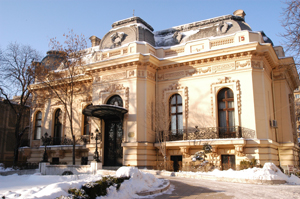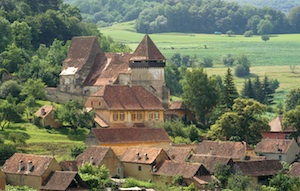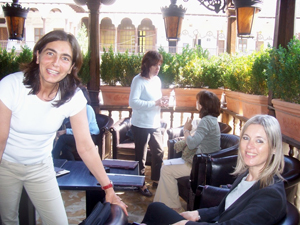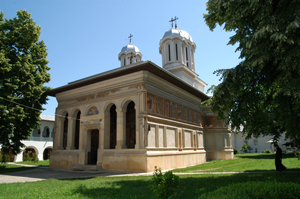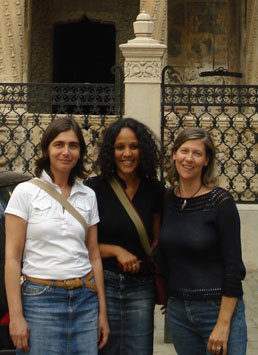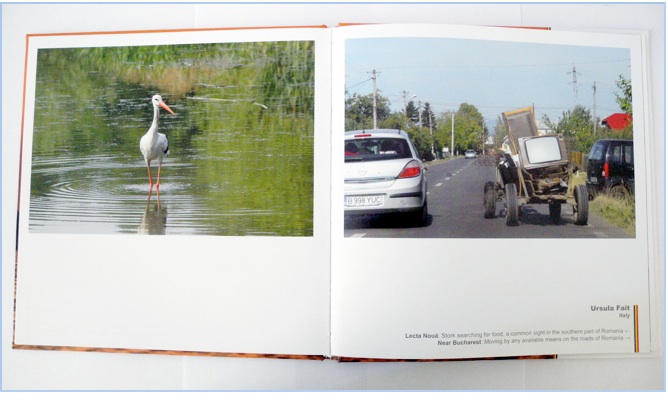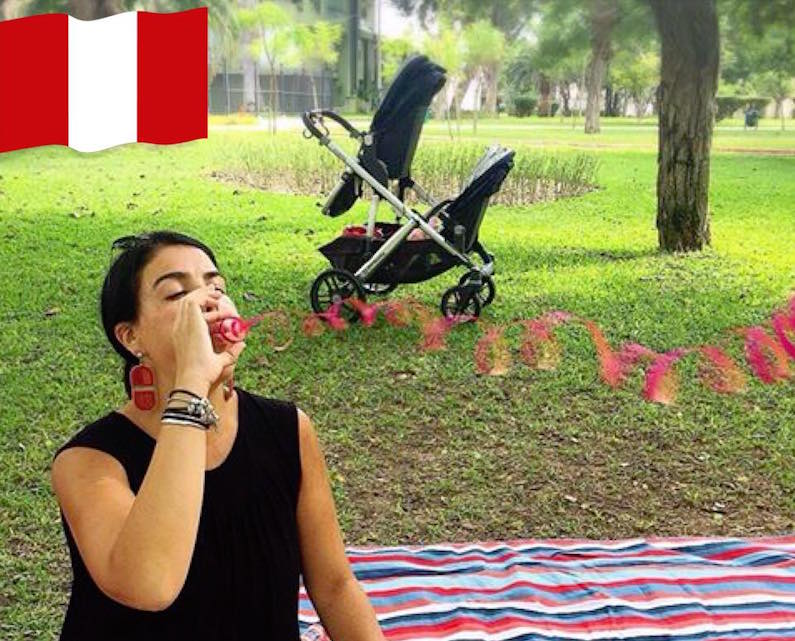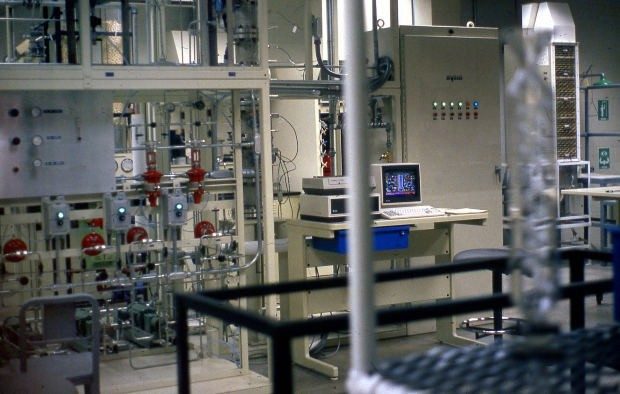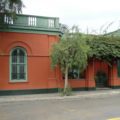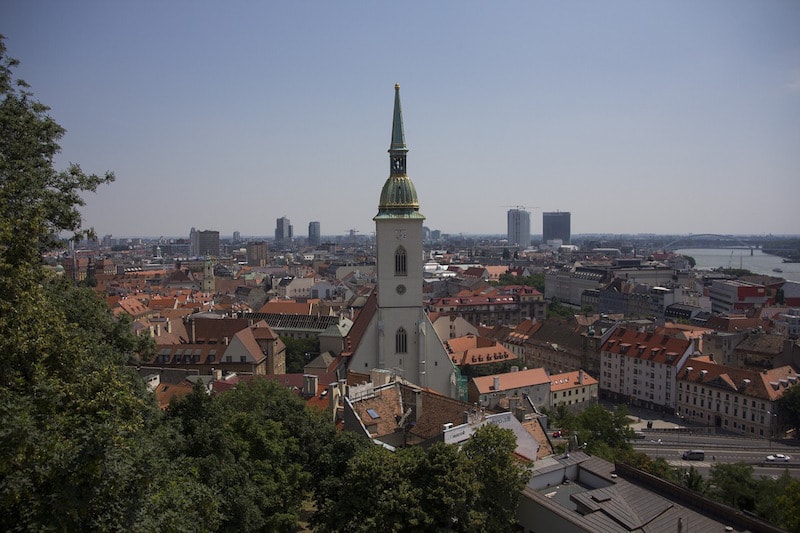
Talking about careers abroad, it is important to mention the possibility of becoming a tourist guide, an interesting and profitable work that allows you to personalize your presentation. I asked Ursula, tourist guide in Bucharest, to update the interview I did a while ago, and it has been a pleasure to see that Ursula has further developed her work, has invented new things and has enriched her presentation with new discoveries about her host country. Thanks Ursula, and congratulations for your work!
Claudiaexpat
October 2013
The story of how I met Ursula, tourist guide in Bucharest, is very nice. A while ago Expatclic launched a photo contest for Italian women living abroad. Ursula participated with three wonderful photos, and got the second prize. We then got in touch to inform her and send her the prize. When Ursula realized that we were organizing an exhibition of the best pictures of the competition, which we intended to show in several countries, she proposed to bring it to Bucharest, where she lives. Ursula and I met in Milan, and then again in Bucharest for the opening of the exhibition and the great event that Ursula organized to accompany it. Our friendship continues and Ursula and I have kept in contact and see each other whenever we can. For this special updating on careers abroad I interviewed her because Ursula works in a professional groove which is easily transferred abroad, and which she has been able to adapt to her life in Romania. Let’s see how.
Claudiaexpat
June 2010
Today I have interviewed another expat woman who works as a tourist guide in Jerusalem. Now I am here with you, a tourist guide in Bucharest. This work seems ideal for women who live abroad, why?
This is a profession you can start at a later stage of your life. I took my license when I was 34. There is no age limit to become a tourist guide. Secondly, a tourist guide is a free-lance worker, and can therefore manage her job according to her personal needs. It is also a work that is very easy to transport and present in new destinations.
Which is what you have done in Romania. Tell us how you organized yourself…
When I arrived in Bucharest, I started by studying the city, exploring it, discovering it. I went on organized tours and I realized they were very unsatisfactory. No tourist guide in Bucharest was able to enthuse me. Therefore I decided to organize my own tours on specific parts of the city – for instance two important monasteries, a particularly interesting museum, etc.
I started from things that are intimately linked to the city, those that allow a better understanding of the place where we live, that talk about its history. I began with the visit to two churches, one of which is important because it is linked to the legend of the birth of Bucharest. Then, I established a visit to the municipal museum, because it tells the history of Bucharest from its origins to the end of the 19th century, it shows its daily life, furniture, clothes and several pictures. Today I have widened my range as a tourist guide in Bucharest, and as well as 7 itineraries in Bucharest and surroundings, I added a three days trip to the yearly Romany celebration and a four day tour of Transylvania.
How did you approach the market? How did you make yourself known?
I started with the Italians. I was part of an association of Italian women that gathered once a month for coffee, to chat and exchange information, and I offered to be their tourist guide in Bucharest. Things went fast from there. A friend asked me to organize some tours for the francophone welcoming association, she translated from Italian to French. Word of mouth did the rest and people started asking for tours for friends or relatives who came to visit.
My itineraries are interesting because I do not give the classical tourist agency trip, that puts everyone on the bus and shows things from above. I show people what I believe makes Bucharest a unique city, where east and west merge, I show verdant areas from the beginning of the 20th century in green, palaces in the style of Napoleon III, orthodox churches that smell of incense.
There are several reasons why I propose a variety of itineraries as a tourist guide in Bucharest. Basically I am interested in showing the city from the inside, and Romania as a country. In the last years I coupled my work as a tourist guide with my passion for photography, and added interesting destinations from a photographic point of view; tours in abandoned factories, a tour to the former prison of Jilava (closed to the public but open to me thanks to a special permit), an excursion in the wildest urban area of Europe: Vacaresti, an ecosystem similar to a delta in the heart of Bucharest, formed in the basin of an artificial lake that Ceausescu never completed. Besides spontaneous vegetation, lakes and marshes, there are 90 species of birds, small mammals and a community of Roma that live like the untouchables in India.
Being a foreigner I obviously have to spend a lot of time discovering what I want to show, and therefore I must visit, explore, inform myself. All the study material is in Romanian, and this demands a lot of work, which precedes the equally intense phase of creating the itinerary.
Are your tours in Italian only, or do you offer them in other languages, too?
My itineraries are in both Italian and in English. I work less in Italian because my public has now become more international. The time I had most fun was when I took the children of the Italian school to visit two monasteries. Having a common language allowed me to give the best of myself. Whereas at the first monastery I dutifully explained architecture and painting on icons, in the second one, in the village of Ţiganeşti, I made the children play a treasure hunt. I drew the map of the village with the monastery, the houses, the streets, I burnt the corners to make it more “pirate like”, and I gave it to the children with some precise tasks: to count how many wells the village has, ask the nuns to give them an old wooden spoon and bring it to me, find out how many nuns live in the village, find the cemetery, find a statue, etc. It was a lot of fun and they learnt many things through playing.
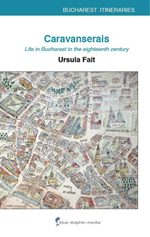 You wrote a tourist guide on Bucharest, tell us about it…
You wrote a tourist guide on Bucharest, tell us about it…
The guide stems from the same idea my itineraries come from. While searching documents to study history, architecture, art, habits of Bucharest, I always and only found material in Romanian. I realized that a foreigner who wants to know the city and does not understand Romanian is left with the classic general guides that do not give a complete image of the city, and do not present the whole of the cultural and historical richness of this place. Hence, I thought to put my itineraries in writing and tell in a book the same things I explain during my tours. The guide is bilingual, English/Romanian, and my idea is to make five or six small pocket editions, as many as the itineraries, a small and handy guide that you can read while you walk, and that tells you street by street about hidden things and the events linked to what today you can no longer see.
The first one is on the historical center, and there is a precise reason for this: for twenty years the historical center has been the most degraded place in town, totally abandoned. There have been attempts to restore it a bit, but in the end the money logic won and almost all the ancient buildings have been turned into restaurants and bars, thus making small shops and antique boutiques disappear, and turning the historical centre into an area of exotic night entertainment. However, those who opened these bars just restored the ground floor (often without respecting the original architecture), leaving the rest of the building in ruins. It is enough to spin your head trying to understand that this city had a rich and glorious past. In the 18th century Bucharest was a sort of Istanbul, a crossroads of goods, cultures, caravans from and to Asia, all kinds of trades. Today you don’t see anything of that at all, but my guide explains how things were at that time, and that where today you see bars and restaurants, once upon a time there were caravanserais; that every street belongs to an order of artisans or traders, and that you could buy anything from marten furs to miraculous ointments. The guide is also full of old pictures, maps and drawings that help the imagination.
Once you had the idea, how did you set about writing the guide?
This was a project I wanted to do at all costs. It took me more than a year and I have been lucky because I met exceptional co contributors: Emma took care of the graphics, but in fact it’s like she participated in the whole process because she was involved in many more aspects; a dear friend of mine voluntarily translated the guide into English, whereas I paid for the translation into Romanian. In order to find images, old pictures and maps of the beginning of the 20th century I thoroughly searched the Bucharest archives, I went to museums, libraries, and I must say that everybody opened their doors with enthusiasm, they let me scan everything for free and with no problem whatsoever. Indeed, the contact with the director of a particular museum has been very interesting, he explained to me things I did not know.
Then I started looking for sponsors. In the meantime I had informally got in touch with the director of the institute that promotes Bucharest. She liked my idea immediately, and was surprised that a foreigner had decided to write a guide on the history of her city. She covered all the expenses (unfortunately not my salary!), so that I was able to publish it within a few months. It is now being sold at an English bookshop, but I also sold many copies at Christmas bazaars and to the customers I give tours to; a huge satisfaction!
And here we see the multi task aspect of many of your initiatives. I cannot avoid thinking of what you managed to organize for the Expatclic exhibition in 2009. Can this also be considered a professional experience?
Certainly yes from the point of view of the discovering many of my hidden talents. In order to organize this exhibition, I had to concentrate on more practical aspects and not necessarily on my artistic creativity. I would have never thought of being able to organize such an event but I did it, even if there were lots of problems to solve. From sponsorship search to the contacts with our embassy, from the preparation of the catalogue to the invitations, from the organization of the forum to the artistic management of the exhibition. In the end it was a very complete event and I have been very happy.
You won the second prize of the Expatclic photo contest (and other prizes) because you are a very good photographer. How did you train yourself in it?
I completely self trained myself, though with a group of friends I recently joined a photo course organized locally, which taught me a couple of tricks but nothing more.
Actually my passion for photography started when my father offered me a Pentax. Since then I never took a trip without my camera. I take pictures instinctively, and in Romania I found an endless source of inspiration. I was fascinated by Bucharest from the very beginning, and she was the protagonist of my first personal exhibition in 2010 at the Spazio Oberdan in Milano, thirty three 50×70 photos!
For the last few years I have been participating in a project that links photography to charity. A group of about 38 expat women has decided to publish yearly a catalogue with photos of their host country, to show how they see Romania. The funds coming from the fees to join the project and the sales of books and photographs are distributed amongst 12 Ngos that work to help needy families and women, abandoned children, hospitals and gypsies.
What would you say to anyone wanting to start your same path as a tourist guide abroad?
First of all that it is not difficult, all you have to do is to start little by little and create a circle of clients, taking care to choose specific tours that might not be included by other guides, since tourists who only pass by usually want to have a general vision of the place. It is important to start the word of mouth amongst one’s own countrymen, then in schools, at the cultural institute, the embassy, the companies. In Milan I used to work as I do here, with schools, tourists, returning tourists, companies, etc.
From an administrative point of view, each one can manage her incomes according to the country where she lives. If you issue Italian payment invoices and your income is below 5,000 euros per year, you don’t even have to make a tax addition. Some countries don’t even require a license to take tourists around. Each case has its own particularities, but it is important to know that this is a profession that can be easily operated abroad, since everywhere in the world there are things to discover and propose.
Should you go back to Italy, what would you bring with you from a professional point of view after this period abroad?
Certainly the fact of not having interrupted my career, but also and foremost the treasure of a new language. If the crisis stopped and Romanians tourists again began to visit Italy, as it happened in the first years after 2000, I would have no problems in taking them around. This would be a great advantage going back into the circle of tourist agencies of Milan.
Thanks a lot Ursula, and best wishes for the future!

